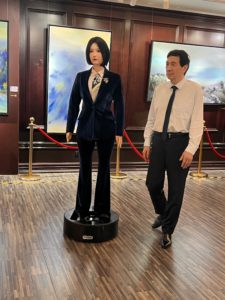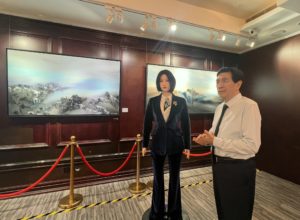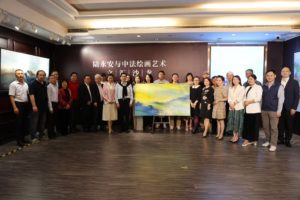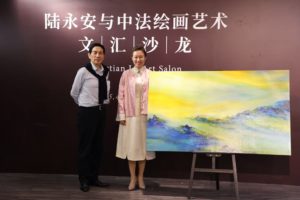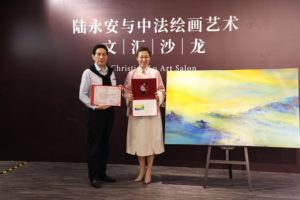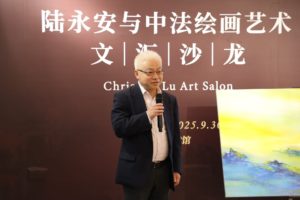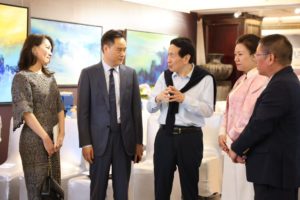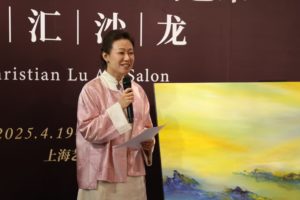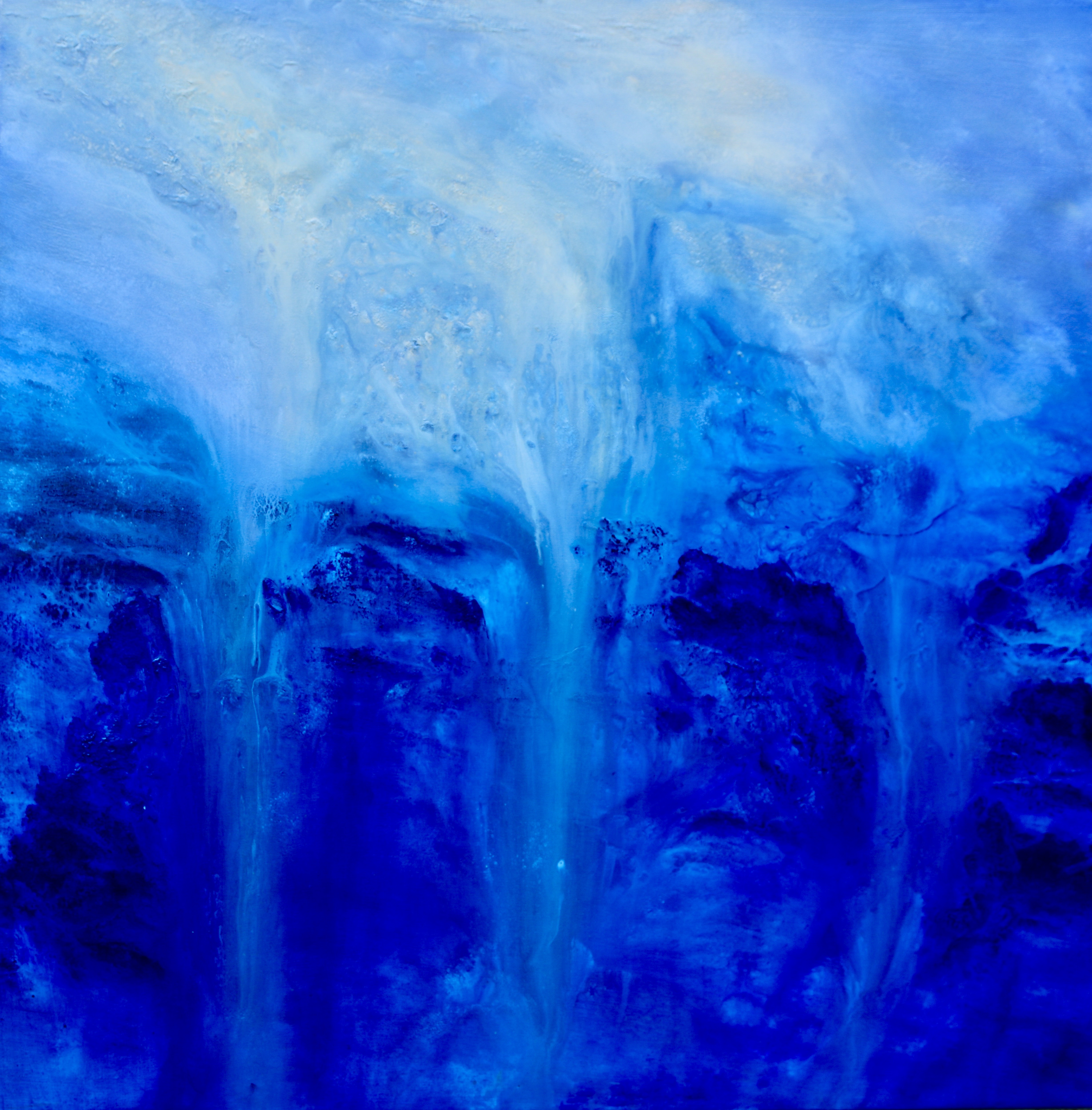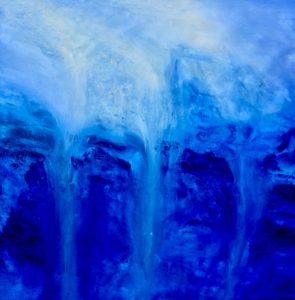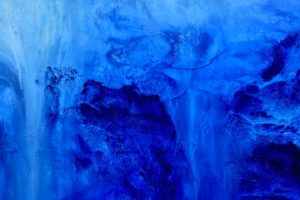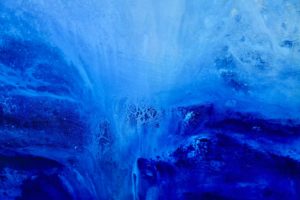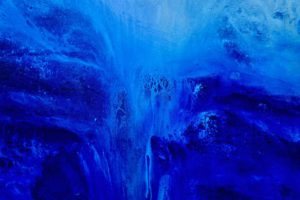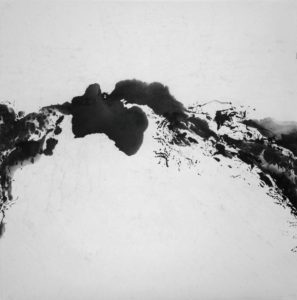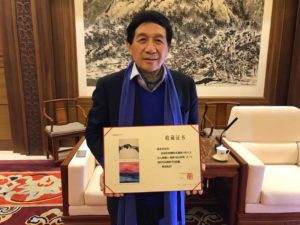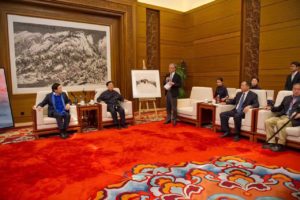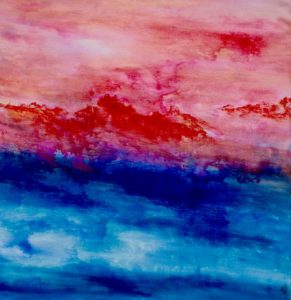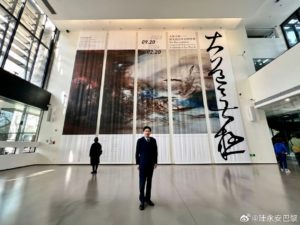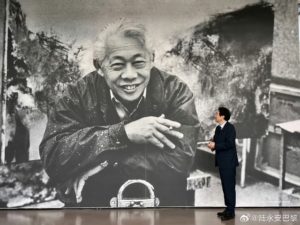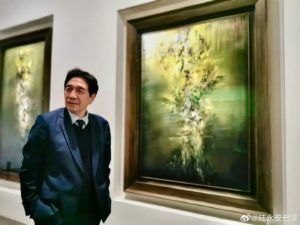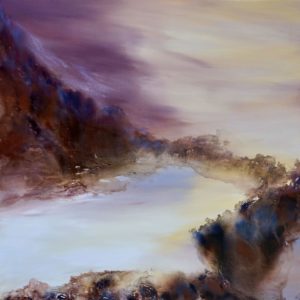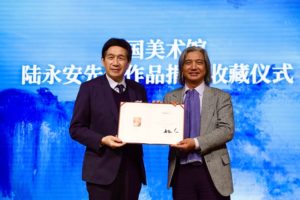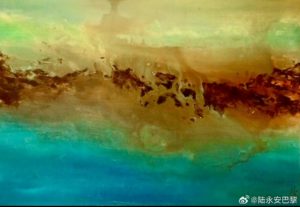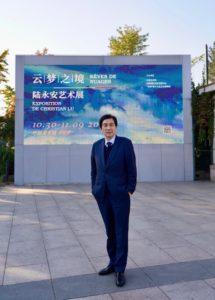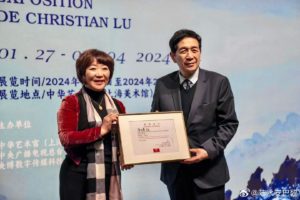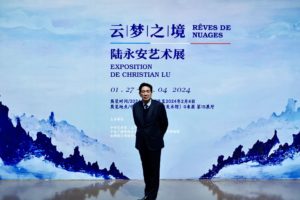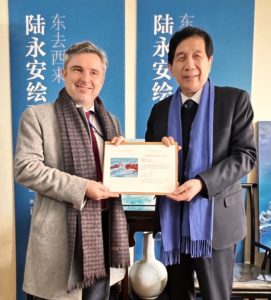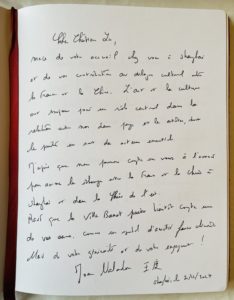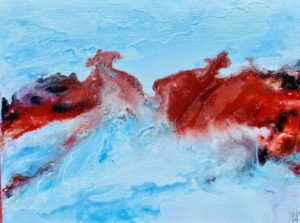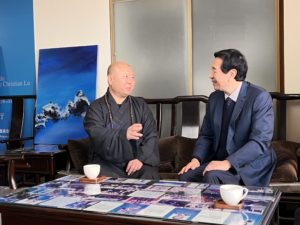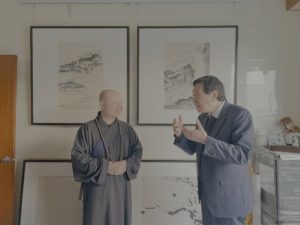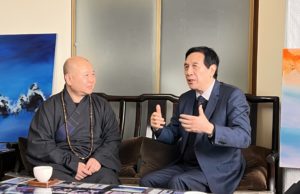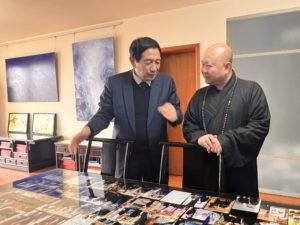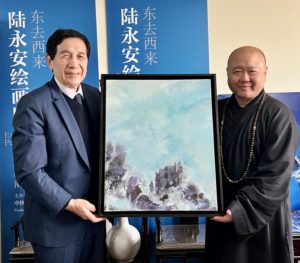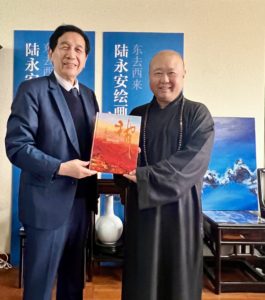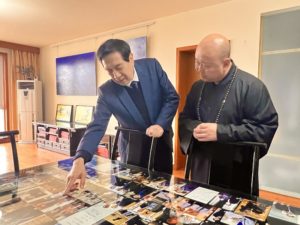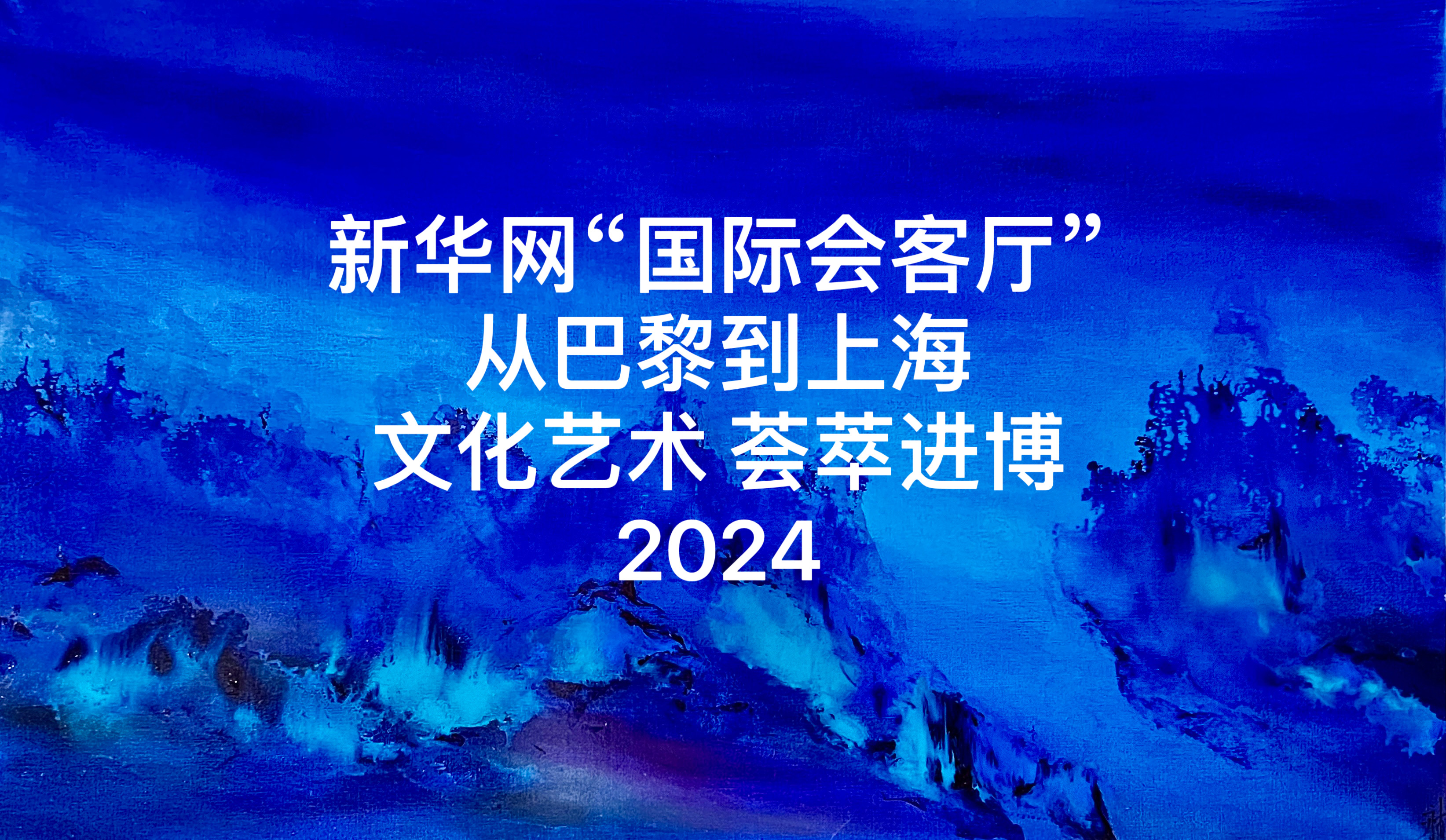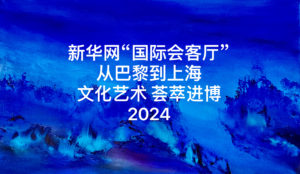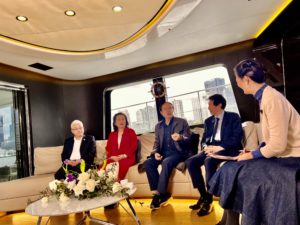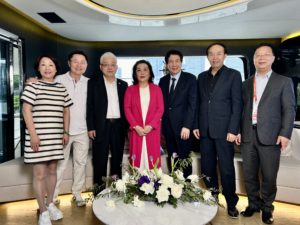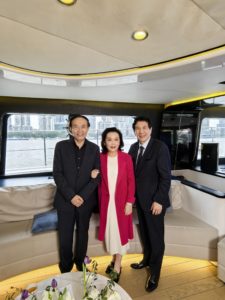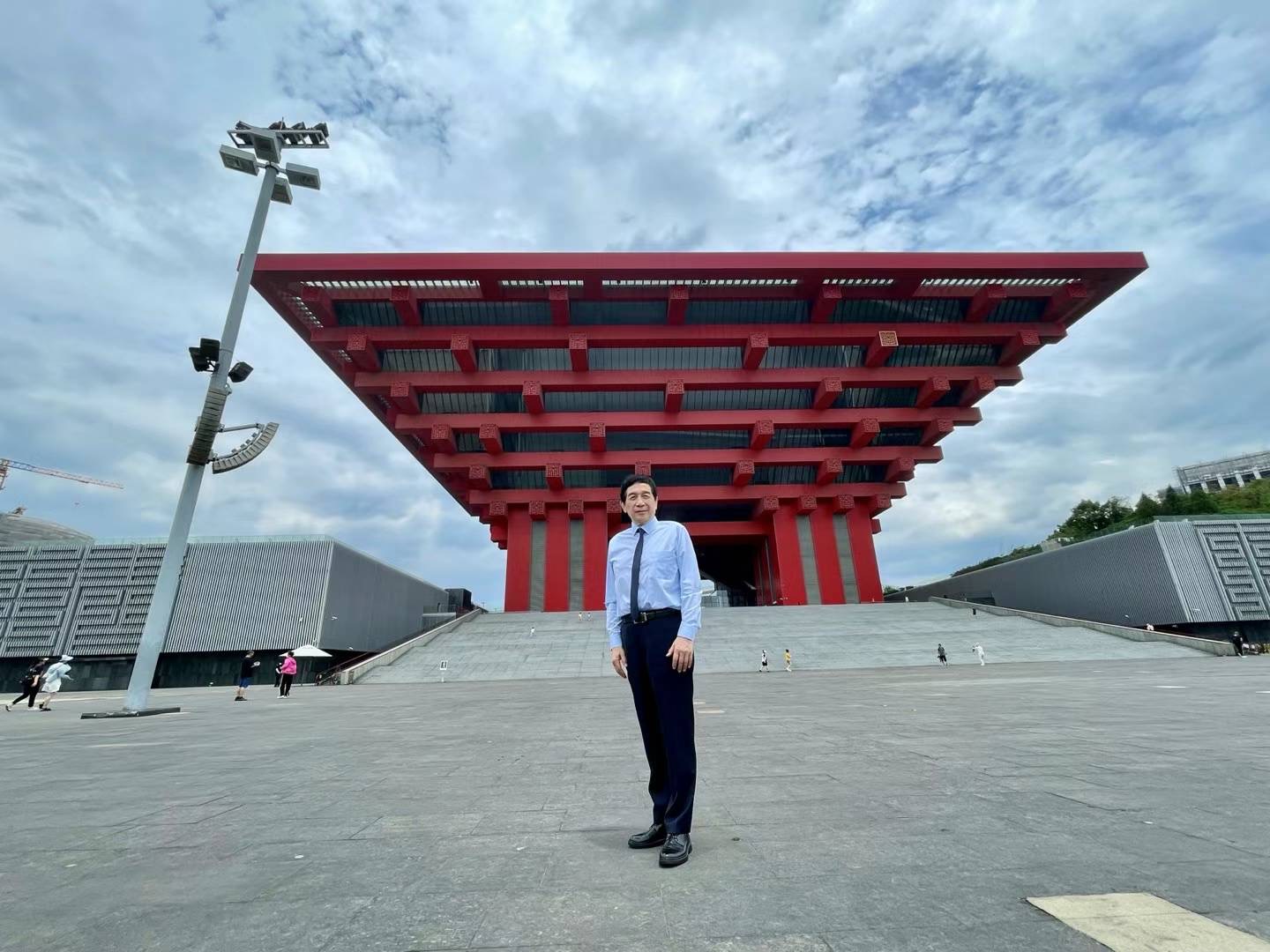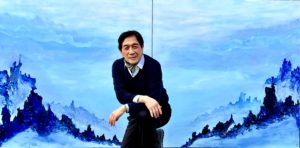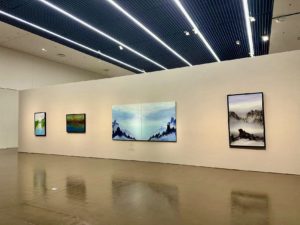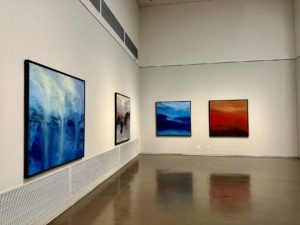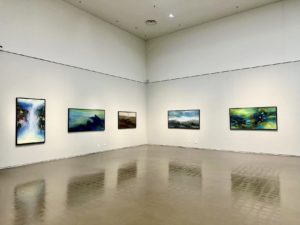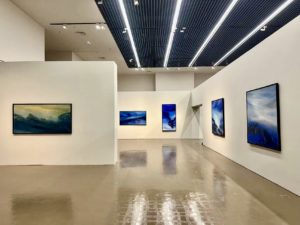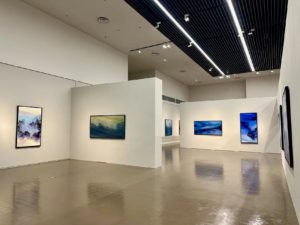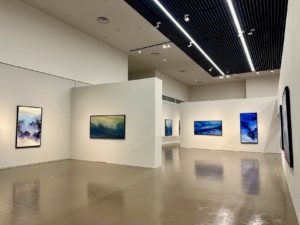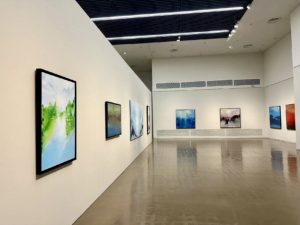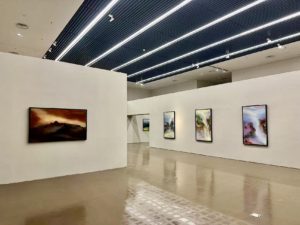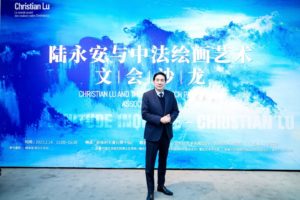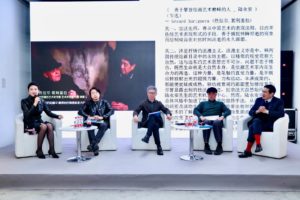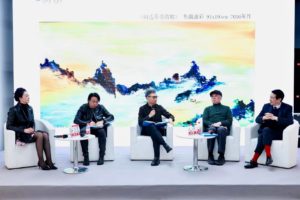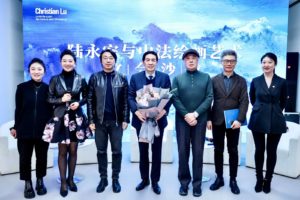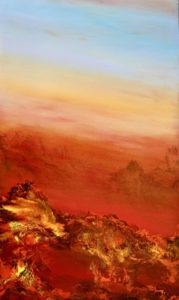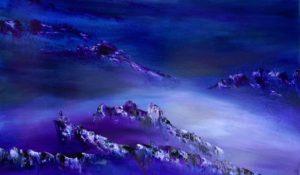
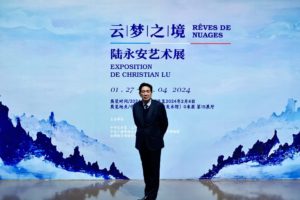
《Tribute to Lu You》 by Christian Lu : A Work Filled with Poetry and Emotion
Through this painting, Christian Lu not only pays tribute to his ancestor, the renowned poet Lu You (陆游), but also seeks to share his vision of family heritage and cultural transmission. This artwork was exhibited at the China Art Museum in Shanghai, the painter’s hometown, once again highlighting his deep connection to his roots.
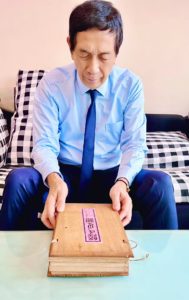
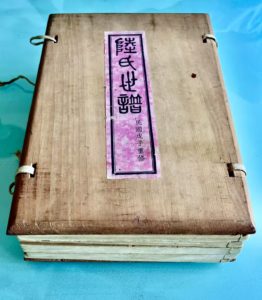
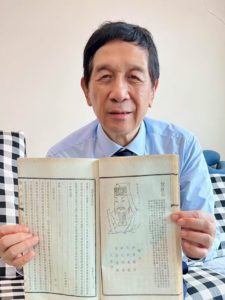
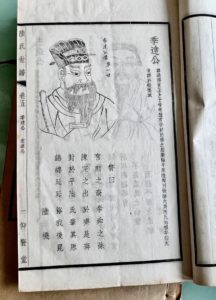

Visual Language and Atmosphere of the Artwork
From a visual perspective, Hommage à Lu You is an abstract painting dominated by shades of purple and blue, with intense and nuanced colors. Purple symbolizes mystery, depth, and nobility, while blue evokes serenity and vastness. The interplay of these colors creates a dreamlike atmosphere, transporting the viewer into a spiritual realm beyond reality.
The composition of the painting is centered on mountains and clouds, with sharp and defined mountain ridges, while the clouds are rendered with soft brushstrokes, creating a visual effect that combines movement and tranquility. This artistic technique recalls the depictions of nature in Lu You’s poetry, particularly his admiration for and contemplation of mountainous and aquatic landscapes. Lu You’s poetry often uses nature to convey deep reflections on life and the homeland. In a similar way, Christian Lu responds to this spirit through his visual language.
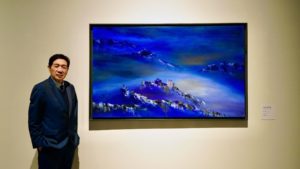
Cultural and Family Significance of the Artwork
As a descendant of the Lu family, Christian Lu’s creation is not merely a personal artistic expression; it is also a continuation and homage to his family’s heritage. Since its foundation by Lu Jigong, the Lu lineage has spanned over two thousand years and has produced many distinguished figures. Lu You, one of its most illustrious representatives, left a lasting impact through his poetry imbued with patriotism and deep emotions. Through this painting, Christian Lu expresses his respect for his ancestor while integrating the spiritual essence of his family’s culture into his artistic creation.
This cultural transmission is metaphorically represented in the painting. The mountains symbolize the foundations and continuity of the lineage, while the clouds illustrate the perpetuation and elevation of its spirit. The harmony between purple and blue reflects both a contemplation of family history and an aspiration toward the future.
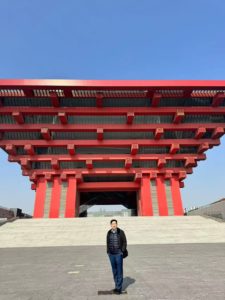
Connection Between the Artwork and the Exhibition Theme
The theme of the exhibition Dreams of Clouds – Christian Lu Art Exhibition resonates deeply with the atmosphere of this painting. Yunmeng (Clouds and Dreams) refers to the vast marshlands of the ancient Chu kingdom, symbolizing the grandeur and mystery of nature. Through its colors and composition, the artist’s work recreates a universe similar to Yunmeng, celebrating both the beauty of nature and the family’s cultural heritage.
The exhibition highlights the profound connections between art, nature, history, and culture. Hommage à Lu You vividly embodies this connection: it not only honors Lu You’s poetic spirit but also serves as a bridge between family tradition and artistic renewal.

